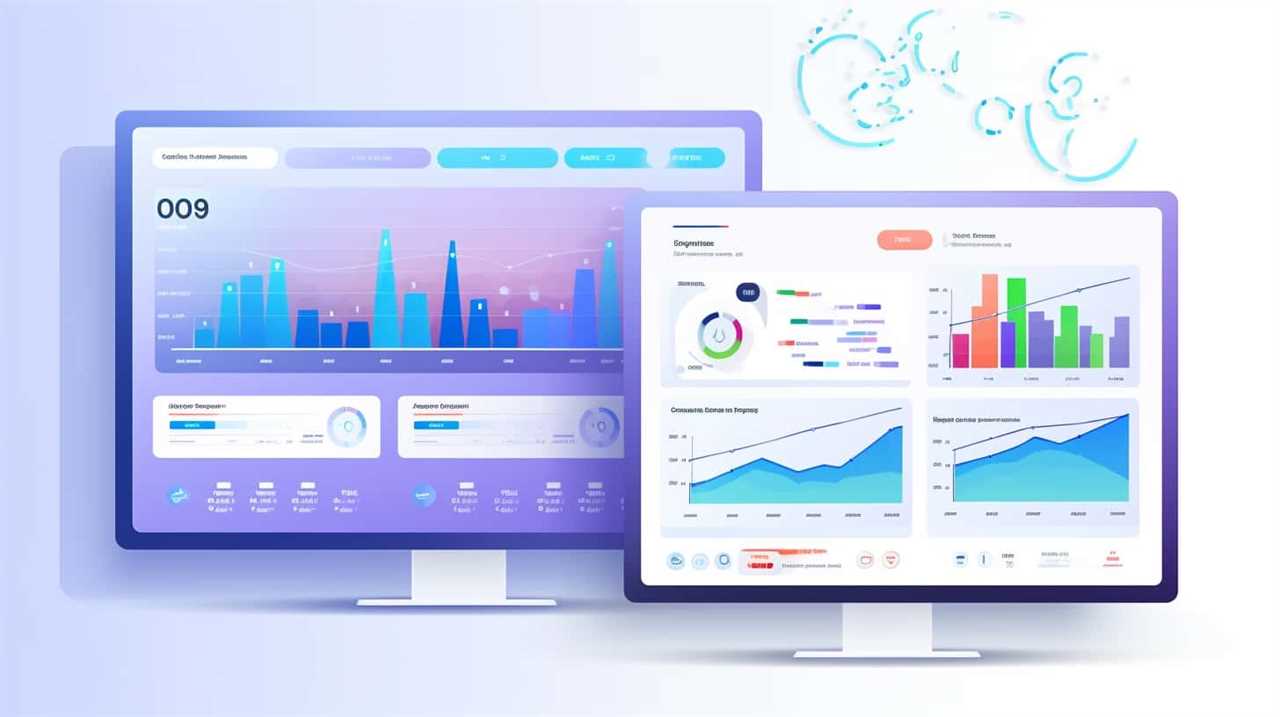If you’re working hard to enhance your website and boost its visibility in search engine outcomes, you’re probably familiar with the phrase, ‘The devil is in the details.’
And when it comes to schema markup implementation, those details are crucial. Schema markup is a form of structured data that helps search engines understand the content on your webpage better.
By adding schema markup to your website, you can provide search engines with specific information about your content, such as product details, reviews, and business information. This allows search engines to display more informative and visually appealing results, known as rich snippets.
So, if you’re ready to master the art of schema markup implementation, let’s dive in and unlock the full potential of your website.

Key Takeaways
- Schema markup is a code standard that categorizes and understands webpage content, providing specific details to search engines.
- Implementing schema markup improves a page’s visibility in search results, leading to increased organic traffic.
- Schema markup allows websites to appear as rich results, providing more detailed and informative search results.
- Review markup enhances the visibility of ratings and reviews in search results, increasing click-through rates and improving search engine optimization.
What Is Schema Markup
You can understand what schema markup is by thinking of it as a code standard used to help search engines categorize and understand your webpage content. It provides specific details about your page, allowing search engines like Google to display more informative search results for users.
Schema markup is a type of structured data, which is a language used to represent data in a structured format. Adding structured data to your webpage organizes the content in a way that makes it easier for search engines to understand.
By using schema markup, you can provide additional information to search engines about your content types, such as recipes or articles. This can include details like cook time for a recipe or user ratings for an article.
Schema markup is an important tool for SEO as it helps search engines better understand your page and improve its visibility in search results.

To implement schema markup, you can use a schema markup generator tool, which simplifies the process and ensures that the markup is correctly implemented on your webpage.
Benefits of Schema Markup
Implementing schema markup on your website offers several key benefits.
Firstly, it can improve your search rankings, making your website more visible to potential visitors.
Secondly, schema markup can increase your click-through rates by providing more detailed and informative search results.

Lastly, it enhances the user experience by delivering relevant and useful information directly in the search results.
Improved Search Rankings
Schema markup implementation can significantly enhance your website’s search rankings. By adding schema markup, you can provide search engines with structured data that helps them understand the content on your web pages. This improved understanding allows search engines to display your website more prominently in search results, increasing your visibility and attracting more organic traffic.
Schema markup also allows your website to appear as rich results, which are more visually appealing and informative to users. Implementing schema markup can boost your SEO efforts by giving your website a competitive advantage over others that haven’t implemented it.
There are various types of schema markup that you can utilize depending on the nature of your content, such as product schema, article schema, and local business schema.

Increased Click-Through Rates
By incorporating schema markup into your website, you can significantly boost the click-through rates of your web pages in search engine results. Schema markup provides structured data that helps search engines understand the content on your web pages better.
When search engines can interpret your content accurately, they can display rich results, which are enhanced search results that include additional information such as images, ratings, and descriptions. These rich results make your web pages stand out and attract more clicks from users.
To add schema markup to your website, you can use Google’s Structured Data Markup or implement different types of schema depending on your content. After adding schema markup, you can test its effectiveness using tools like the Structured Data Testing Tool and the Rich Results Test tool.
Monitoring your click-through rates in Google Search Console will also provide insights into the impact of schema markup on your search engine results.

Boosting your click-through rates through schema markup can give your website a competitive advantage and drive more traffic to your web pages.
Enhanced User Experience
To enhance your user experience, schema markup provides a range of benefits. By incorporating structured data into your website, you can optimize your content for search engines and improve the overall user experience.
Here are three key benefits of implementing schema markup:
- Rich Results: Schema markup enables search engines to display rich results, such as featured snippets, knowledge panels, and carousels. These visually appealing and informative snippets provide users with quick access to relevant information, increasing their engagement and satisfaction.
- Enhanced Content Types: Schema markup supports various content types, including articles, products, events, recipes, and reviews. By implementing schema markup for these content types, you can ensure that search engines understand and present your content accurately, leading to better visibility and higher click-through rates.
- Business Results: Schema markup can also benefit businesses by showcasing important details, such as contact information, opening hours, and customer reviews directly in search results. This helps users make informed decisions and builds trust and credibility for your business.
Types of Schema Markup
Choosing the right schema markup can greatly enhance your website’s visibility and user experience. Schema markup is a structured data implementation that helps search engines understand the content on your website better. By using schema markup, you can provide search engines with additional information about your website, which can lead to improved search engine rankings and increased organic traffic.

There are different types of schema markup that you can implement on your website, depending on the type of content you have. Here are some common types of schema markup:
| Schema Markup Type | Description |
|---|---|
| Logo Markup | Provides search engines with information about your company’s logo, ensuring the correct logo displays. |
| Local Business | Highlights contact information and business details, displayed in a Local Business Panel on search pages. |
| Review Markup | Adds star ratings to search results, offering insights into others’ opinions of your site or product. |
| Sitelink Markup | Adds additional navigational links to a listing on the results page, facilitating easy access to pages. |
| Product Markup | Provides searchers with additional details directly on the search results page, improving visibility. |
Implementing the right schema markup can have a significant impact on your website’s visibility in search engines and the user experience it provides. Now, let’s dive into the details of implementing local business markup and how it can benefit your website.
Local Business Markup
To effectively implement Local Business Markup, you need to understand its importance in providing accurate information about your business and enhancing the user experience on search engine results pages. Local Business markup, also known as Local Business schema, is a type of structured data that helps search engines understand and display important details about your business.
Here are three reasons why implementing Local Business Markup is crucial for your online presence:

- Improved visibility: By adding Local Business markup to your website, you can increase your chances of appearing in rich results on search engine results pages. This means that potential customers can easily find your business and access key information without having to click through multiple pages.
- Enhanced user experience: Local Business Markup provides searchers with essential details about your business, such as your address, phone number, and hours of operation. This information is displayed prominently in the Local Business Panel, making it convenient for users to get the information they need quickly and easily.
- Accurate information: By implementing Local Business Markup, you can ensure that search engines display accurate and up-to-date information about your business. This helps to build trust with potential customers and improves the overall credibility of your business online.
To make sure your Local Business Markup is working correctly, it’s essential to test and validate the markup using structured data testing tools. Regularly reviewing and updating your content and markup will ensure that search engines have the most accurate information about your business.
Review Markup
When it comes to Review Markup, there are several points worth discussing.
First, let’s explore the benefits of implementing Review Markup, such as increased customer trust and credibility, as well as improved visibility and click-through rates.
Next, we’ll delve into the best practices for implementing Review Markup, including proper formatting and guidelines for displaying star ratings.

Lastly, we’ll examine the impact of Review Markup on search rankings and how it can potentially improve organic search visibility and attract more traffic to your site.
Benefits of Review Markup
Implementing review markup on your website can greatly benefit your online presence and increase customer trust and credibility. By incorporating structured data into your website’s code, search engines are able to understand and display your review information in rich results.
Here are three key benefits of using review markup:
- Enhanced visibility: Adding review markup allows search engines to better understand and present your website’s ratings and reviews, making them more prominent in search results.
- Increased click-through rates: When potential customers see star ratings displayed in search results, they’re more likely to click on your website, as they can quickly assess the quality and popularity of your products or services.
- Improved search engine optimization (SEO): Implementing schema markup, including review markup, can help search engines understand your website’s content better, leading to improved rankings and visibility in search results.
Best Practices for Implementation
To effectively implement review markup on your website, consider the following best practices.

First and foremost, make sure to use structured data to mark up your reviews. This means using schema markup to provide search engines with the necessary information about your reviews.
Additionally, ensure that your reviews are honest and authentic, as search engines prioritize genuine user-generated content.
Implementing schema markup for reviews can lead to rich results, which display star ratings in search engine listings, attracting more potential customers.
It’s also important to choose the appropriate schema type for your reviews, whether it be for products, services, or businesses.

Lastly, regularly monitor and update your review markup to maintain accuracy and relevancy.
Impact on Search Rankings
Review markup can significantly impact your website’s search rankings. By implementing structured data for reviews using schema markup, you can improve your chances of appearing in rich results and enhance the visibility of your web pages on search engines.
Here are three reasons why review markup is essential for improving your search rankings:
- Increased click-through rates: Including star ratings in search results can attract more clicks from users, as it provides valuable information about the quality and popularity of your website or product.
- Enhanced visibility in organic results: Websites with review markup are more likely to appear in rich results, which can lead to higher visibility and a competitive edge over other websites.
- Improved credibility and trust: Displaying reviews and star ratings can build trust with potential customers, increasing the likelihood of conversions and positively impacting your search rankings.
With the proper implementation of review markup, you can optimize your website for higher search rankings and better overall performance.

Now, let’s move on to discussing the importance of sitelink markup.
Sitelink Markup
To properly implement sitelink markup, you need to understand its purpose and how it enhances visibility and navigation on search engine result pages. Sitelink markup is a type of structured data that helps search engines understand the structure and organization of your website. By using structured data, you can give search engines more information about the pages on your site and improve their understanding of your content.
When search engines understand your site better, they can display rich results, such as sitelinks, in the search results. Sitelinks are additional links that appear below the main search result and provide users with quick access to specific pages on your site. These links can significantly improve the user experience by allowing searchers to navigate directly to the most relevant pages without having to go through your homepage.
To implement sitelink markup, you can use tools like the Structured Data Markup Helper or Google’s Rich Results Test. These tools can guide you through the process of adding the necessary schema markup to your site’s HTML. Once implemented, you can monitor the performance of your sitelinks through Google Search Console.

Product Markup
To maximize the benefits of product markup and ensure effective implementation, there are a few key points to consider.
First, product markup provides valuable information about your products directly in search results, enhancing the user experience and increasing click-through rates.
Second, to optimize your product markup, it’s important to follow best practices such as including accurate and detailed information, utilizing proper schema types, and regularly testing and monitoring your markup for any errors or issues.
Benefits of Product Markup
Your website’s visibility and click-through rates can significantly improve by implementing product markup. Here are three key benefits of product markup that can enhance your website’s performance:

- Increased visibility: Product markup provides Google with more information about your products, allowing them to be displayed prominently in search results. This increased visibility can lead to higher click-through rates and more organic traffic to your website.
- Improved user experience: With product markup, searchers can see important details about your products directly on the search results page, such as prices, availability, review ratings, and shipping information. This enhanced user experience can attract more qualified leads and increase conversions.
- Enhanced image search results: Product markup enables Google to display images of your products in Google Image Search. This not only improves the chances of getting a rich result that takes up more space on the search results page but also increases the likelihood of attracting potential customers through image searches.
Best Practices for Implementation
Implementing product markup effectively requires attention to detail and adherence to best practices. To ensure successful implementation, follow these best practices for product markup:
- Use schema.org: Schema.org provides a standardized vocabulary for structured data markup. Utilize the appropriate schema types for your products, such as Product, Offer, and Review.
- Provide complete and accurate information: Include essential details like product name, description, price, availability, and review ratings. The more information you provide, the better search engines can understand and display your product.
- Use contextually relevant markup: Tailor your markup to the specific context of your website and products. Consider the attributes that are most important to your target audience and focus on highlighting those aspects.
- Test and validate your markup: Use tools like Google’s Structured Data Testing Tool to ensure that your markup is correctly implemented and error-free.
How to Generate and Test Schema Markup
Start by using Google’s Structured Data Markup Helper tool to generate schema markup for your website. This tool allows you to select the type of data you want to markup, whether it’s articles, local businesses, or other contextually relevant information.
Here are three key steps to generate and test schema markup:
- Choose the data type: When using the Markup Helper tool, select the appropriate data type that matches your content. This ensures that the generated markup is specific and accurate.
- Add the markup: After selecting the data type, paste your content into the tool and highlight the relevant elements. The tool will generate the schema markup code for you to use.
- Test the markup: Once you’ve added the markup to your website, it’s important to test it using the Structured Data Testing Tool. This tool allows you to see how the markup will appear in search results and ensures that it’s implemented correctly.
By following these steps, you can generate and test schema markup for your website, improving its visibility and providing search engines with valuable information.

Now that you understand how to generate and test schema markup, let’s move on to the next section where we’ll discuss how to add it to your website.
How to Add Schema Markup to Your Website
To successfully incorporate schema markup into your website, begin with the implementation process. Start by using Google’s Structured Data Markup Helper tool to select the type of schema you want to add. Paste the URL or HTML of the webpage you want to markup, then use the tool to highlight and tag the relevant elements. This helps you add the necessary schema markup to your website.
Once you have tagged the elements, continue adding markup items based on the available data items. This ensures that you provide search engines with as much structured data as possible. After you have added all the necessary markup, create the HTML code with the inserted microdata. This code should be added to your website’s CMS or source code for implementation.
To ensure that the schema markup is correctly implemented, it’s important to test it. Use Google’s Structured Data Testing Tool to preview how the markup will appear in search results. This tool helps you identify any issues and make necessary adjustments before going live with the markup.

By adding schema markup to your website, you’re providing search engines with structured data that tells them what your content is about. This helps improve your website’s visibility in Google’s search results and enhances the user experience.
In the next section, we’ll discuss the importance of schema markup for SEO.
Importance of Schema Markup for SEO
Maximize your website’s search engine optimization (SEO) potential by leveraging the importance of schema markup.
Schema markup, also known as structured data, is a way to provide search engines with additional information about the content on your web page. By using specific markup types, you can help search engines understand your content better and display it in a more enhanced and informative way.

Here are three reasons why schema markup is crucial for SEO:
- Rich Snippets: Schema markup enables the display of rich snippets, which are enhanced search results that provide additional information such as ratings, reviews, and product details. By implementing schema markup, you can make your web pages stand out and attract more clicks from search engine users.
- Enhanced Visibility: Schema markup helps search engines understand the context and relevance of your content. This improved understanding can lead to higher rankings in search results, increasing the visibility of your website and driving more organic traffic.
- Improved User Experience: Schema markup enhances the user experience by providing more relevant and detailed information directly on the search results page. Users can quickly find the information they need without having to click through multiple websites, resulting in a more satisfying search experience.
By incorporating schema markup into your website’s SEO strategy, you can improve your search engine rankings, attract more clicks, and provide a better user experience.
In the next section, we’ll delve into final thoughts on schema markup implementation.
Final Thoughts on Schema Markup Implementation
Implementing schema markup into your website is crucial for maximizing its search engine optimization potential and improving the user experience. As you have learned throughout this article, schema markup provides contextually relevant information to search engines, helping them understand the content on your website better. This, in turn, increases the chances of your website appearing in featured snippets, enhances your website’s authority and credibility, and provides structured data for voice search.

In conclusion, when it comes to schema markup implementation, it’s important to choose the right schema types that align with your website’s content and goals. Consider implementing review markup if you want to build trust and credibility with potential customers. If you run an e-commerce store, product markup is essential for providing detailed information about your products in search results. And for local businesses, implementing local business markup ensures accurate information is displayed to searchers, encouraging foot traffic and improving your online presence.
Regularly testing and updating your schema markup is also crucial for optimal performance. This ensures that search engines continue to understand your website’s content and display accurate information. By following these guidelines and staying up-to-date with schema markup best practices, you can maximize the benefits of schema markup implementation and improve your website’s visibility and user experience.
Frequently Asked Questions
What Is Schema Markup Implementation?
Schema markup implementation is the process of adding structured data to your website to help search engines understand and categorize its content.
By doing this, you can provide specific details about your webpage content, resulting in richer and more informative search results for users.

Examples of schema markup implementations include Local Business markup and Review markup, which provide essential information to searchers and build trust with potential customers.
Product markup allows for more detailed information about products to be displayed directly on the search results page, enhancing the user experience.
What Is the Recommended Format for Implementing Schema Markup?
The recommended format for implementing schema markup is JSON-LD. It’s the go-to choice for Google due to its simplicity and clean code. By using JSON-LD, you can easily add structured data to various parts of your webpage.
Remember, you don’t have to add it to every single word.

To ensure your schema markup is correct, you can use Google’s Structured Data Testing Tool before integrating it into your website’s CMS or source code.
How Do You Implement Local Schema Markup?
To implement local schema markup, you need to highlight your contact information and business details on your website. This ensures that Google displays accurate information in the Local Business Panel on search engine results pages.
How Do I Manually Add Schema Markup?
To manually add schema markup, you need to embed schema code into your webpage’s HTML. Start by highlighting and tagging the elements you want to add schema markup to. You can use Google’s structured data markup helper tool to assist you.
Once you’ve created the HTML with the microdata, simply add it to your website. By using schema markup, you can enhance the visibility and appearance of your website’s information in search engine results.

Conclusion
You’ve reached the end of the road, but don’t worry, implementing schema markup is like adding a GPS to your website. It guides search engines to understand and display your content accurately.
By following the guidelines and regularly monitoring your markup, you’ll stay on track and improve your website’s visibility.
So buckle up and optimize your website with schema markup to reach new heights in search engine rankings.










